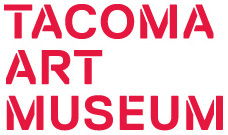
Kenjiro Nomura: Images from Minidoka
In June of 2013, TAM received an important historical addition to the Northwest art collection: the George and Betty Nomura Collection of 34 oils, watercolors, and drawings as well as working sketches and sketchbooks from the modernist painter Kenjiro Nomura (1896-1956) created during his imprisonment at the Minidoka Relocation Center during World War II.
When Kenjiro Nomura was a child his family immigrated to the United States from Gifu, Japan, in 1907 settling in Tacoma. When the rest of the family returned to Japan some years later he remained and took a job as a delivery man for a local merchant. In 1916 he moved to Seattle and it remained his home throughout his life.
In Seattle, Nomura began to pursue his dream of becoming a professional artist. He began exhibiting work around 1916 and was primarily self-taught though he studied briefly with the artist Fokko Tadama (1871-1937) between 1919 and 1920. In the late 1920s he became a sign painter so that he could combine work and art. In his free time he continued to paint and began exhibiting his landscapes and figure studies regionally. He rapidly became a well-respected and prominent Northwest artist. His solo exhibition was one of the first shows at the Seattle Art Museum when it opened in 1933. He also exhibited work at such prestigious venues as the San Francisco Palace of the Legion of Honor and the Museum of Modern Art, New York.
Nomura’s life changed drastically in the spring of 1942 when in the aftermath of the bombing of Pearl Harbor, the American government declared all Japanese immigrants and American citizens of Japanese ancestry living on the West Coast be placed under military arrest and relocated to government camps for the duration of the war. Nomura and his family were imprisoned first at the assembly center known as Camp Harmony, on the Puyallup Fairgrounds, and then at the Minidoka Relocation Center in Hunt, Idaho, where they remained until 1945. They lost not only their home, possessions, and business but also much of Nomura’s existing artwork.
Nomura worked as a sign painter for the camps and privately painted and sketched when time allowed using whatever materials he could find, creating a significant body of images of daily life and the surrounding environment. When he was released in 1945, he packed away these works and never exhibited them.
After his death in 1956, the Minidoka works became the care of his son George Nomura, who for many years kept them packed away as his father had. After extended discussions with his wife Betty and the rest of the family, George eventually decided that this unique group of his father’s works needed to be seen. These images not only document a dark moment in our nation’s past but offer an individual view into the day-to-day life in the internment camps. As well the works were created at a life-changing moment in Kenjiro Nomura’s artistic career and are some of the last examples of his modernist representational style. Further, the quick, annotated sketches, detailed drawings, paint studies, and finished works contain insights into Nomura’s working method, a rarity for an artist whose artworks are now hard to find. And they are wonderful: poignant and often stark, atmospheric, and full of mundane details that subtly underline the sense of a community striving for normalcy in a world turned upside down.
In 1991 the Nomura family partnered with the Wing Luke Museum of the Asian Pacific American Experience to organize a traveling exhibition of the drawings and paintings, titled "Kenjiro Nomura: An Artist’s View of Japanese American Internment" which was seen throughout the region as well as in Colorado and Pennsylvania and the U.S. House of Representatives in Washington D.C.
In 2013, the Nomuras decided it was time to find a permanent home for these works in the Northwest where they would be more readily accessible, carefully cared for, and part of the larger story of Northwest art. Tacoma Art Museum is deeply honored to have been chosen as the repository for the George and Betty Nomura Collection because of the museum’s commitment to the art and artists of the Northwest.




